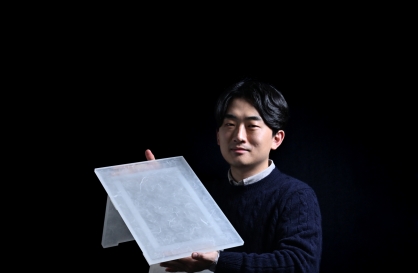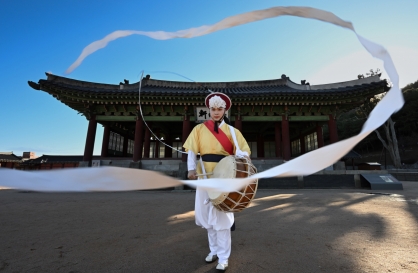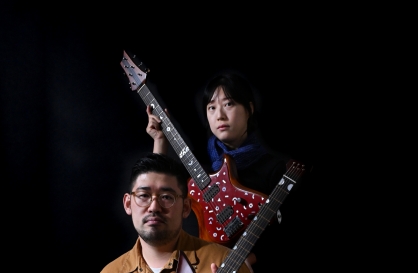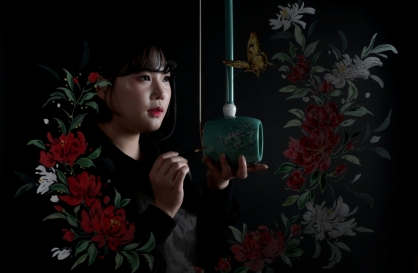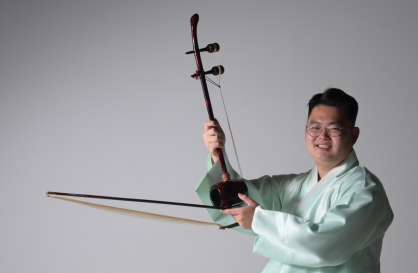Most Popular
Eye Plus
[Eye Plus]Bipa, an instrument pulled out of decades of oblivion
By Lim Jae-seongPublished : Nov. 11, 2023 - 16:01

The "bipa," a guitar-shaped Korean traditional instrument widely loved for over a thousand years, has almost been completely lost to history.
Kim Ju-yeong, one of fewer than 10 bipa players left in Korea, has worked hard to preserve tradition and connect modern people with the instrument.
“I began to play the bipa following my aunt’s recommendation. As a child, I had trouble focusing, but I could concentrate well when I played the bipa,” Kim said.
“The sound of the bipa carries a special quality that cannot be felt from other instruments. When plucking a string with 'gajogak' (artificial nails used in playing the bipa), the friction produces a sound that feels almost cold. Then, the resonance from the cotton string triggers a feeling of warmth. It is the unique beauty of the bipa,” he added.
The bipa has five cotton strings on a body that resembles a gourd cut in half. The body is made of paulownia and chestnut. A player attaches gajogak to the five fingers of the right hand to protect them.

The Central Asian instrument is thought to have been introduced to Korea in the fifth century during the Goguryeo era (37 BC-AD 668). Since then, Koreans developed their own version of the bipa, also called "hyangbipa," making it one of the major instruments called "samhyeon samjuk" -- three string instruments and three bamboo-made wind instruments.
However, the popularity of bipa waned during the late 19th century. After Japanese colonial rule and the Korean War, few makers of the bipa instrument nor bipa players were left in Korea.
Kim is working hard to revive public appreciation for the bipa.
“Along with learning how to play it, I studied the history of the bipa and I felt a sense of responsibility to restore the tradition,” Kim said.
As a part of his efforts, Kim runs a YouTube channel where he plays modern or western music with the bipa, as well as teaching about the instrument.
“The YouTube channel also helps me improve my skills. I learn a lot from viewers' feedback,” Kim added.
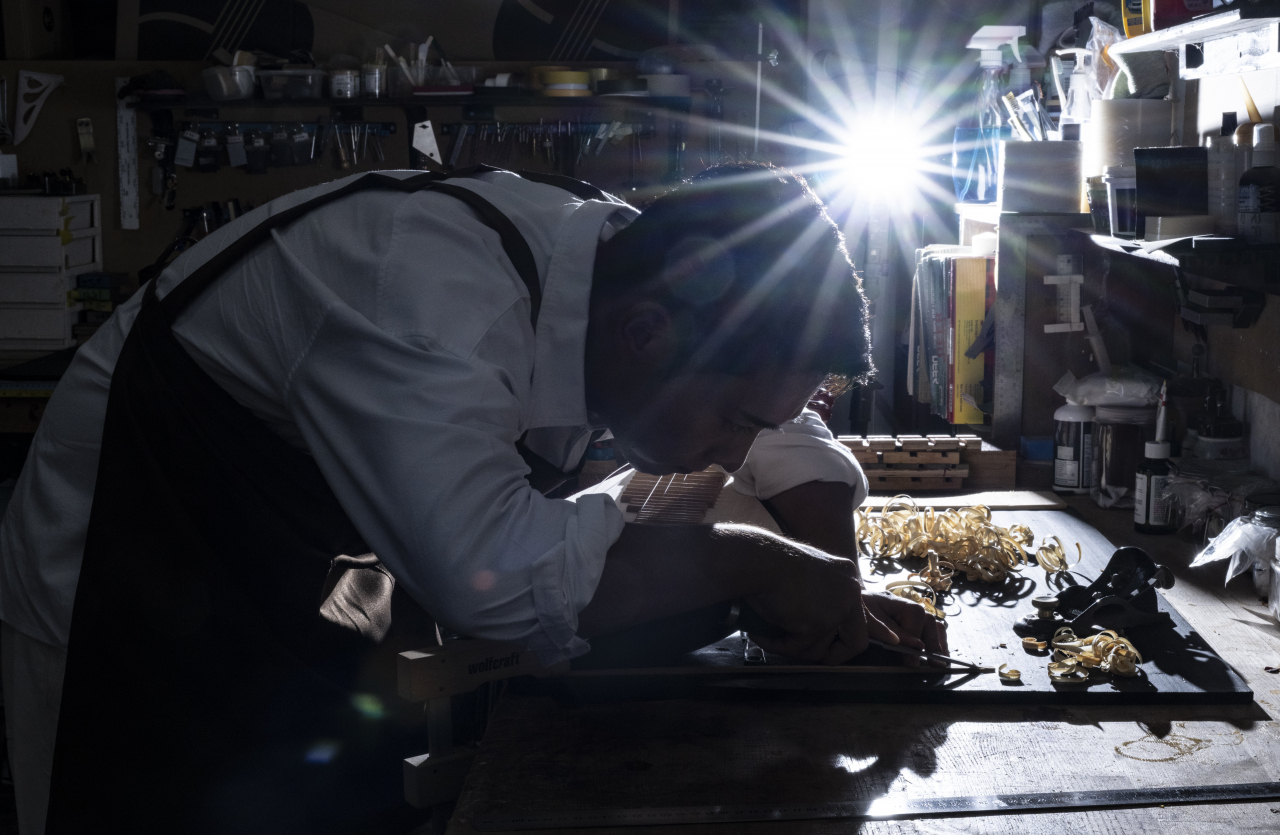
On the other hand, Kim also makes bipa by himself, hoping to make more affordable and easier bipa for beginners and intermediate players.
“When I began playing the bipa, the price of it was millions of won, and it still costs at least 3 million ($2,300). The price needs to be lowered for it to be more accessible,” Kim said.
“After touring many workshops and factories, I finally came up with a form of bipa that I wished to make. The success gave me the greatest happiness,” Kim added.
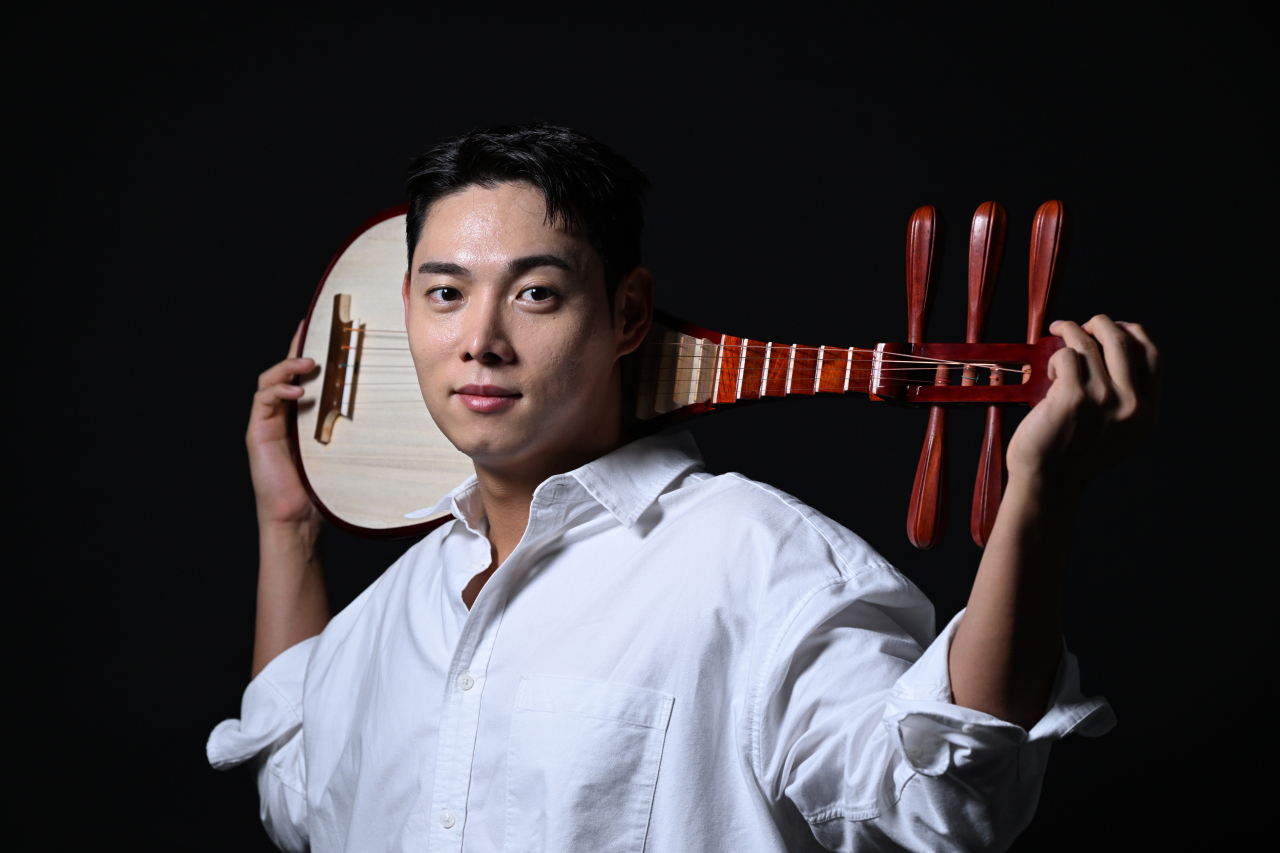
Kim's goal is not only confined to reviving the bipa in Korea.
“I hope more people can find their instrument, protecting their mental health from their busy and exhausting lives. The bipa can be their choice as it becomes more well-known and more affordable,” Kim said.
“I want to give people health, and this is why I continue playing and making bipa,” he added.
Photos by Im Se-jun
Written by Im Se-jun, Lim Jae-seong












